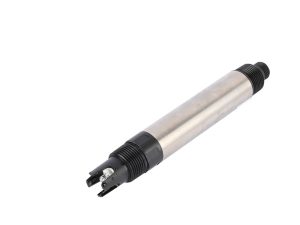Digital pH Sensors: How They Are Revolutionizing Environmental Monitoring

The importance of monitoring pH levels in the environment cannot be overstated. Whether it’s assessing the health of water bodies, managing wastewater treatment plants, or tracking soil quality in agricultural settings, maintaining the proper pH balance is critical for both ecological sustainability and regulatory compliance. Traditionally, environmental monitoring for pH was a labor-intensive process, often requiring manual sample collection and time-consuming analysis. However, with the advent of Digital pH sensor, environmental monitoring has become more efficient, accurate, and real-time, allowing for more proactive and informed decision-making.
In this blog, we will explore how digital pH sensors are revolutionizing environmental monitoring, and why they are a game-changer for industries, municipalities, and environmental agencies working to protect our natural resources.
What Are Digital pH Sensors?
Digital pH sensors are modern instruments that measure the acidity or alkalinity of a solution using advanced electronic technology. Unlike traditional pH meters that rely on glass electrodes and analog readings, digital pH sensors convert the measured voltage from the solution into a digital signal, which is then displayed on a digital screen or transmitted to a remote system. These sensors are known for their precision, ease of use, and ability to provide real-time, continuous data with minimal maintenance.
Many digital pH sensors are also equipped with automatic temperature compensation (ATC), which adjusts the pH reading to account for temperature variations, ensuring consistent accuracy regardless of environmental fluctuations.
Why is pH Monitoring Crucial in Environmental Settings?
pH is a vital indicator of water and soil quality. In both natural and industrial environments, pH levels influence the health and behavior of ecosystems, as well as the efficiency of industrial processes. In aquatic environments, for example, the pH of water can significantly affect the health of aquatic species, the solubility of nutrients, and the effectiveness of water treatment. Similarly, in soil, pH influences nutrient availability and microbial activity, which in turn affects crop yields and ecosystem health.
Key Benefits of Digital pH Sensors in Environmental Monitoring
-
Real-Time, Continuous Monitoring
One of the greatest advantages of Digital pH sensor is their ability to provide real-time, continuous monitoring of pH levels. In traditional monitoring systems, measurements were often taken at intervals, requiring the collection of samples and lab analysis, which could take hours or even days. Digital pH sensors, on the other hand, can continuously monitor pH levels in a water body, soil, or wastewater system, providing instantaneous feedback.
For example, in a water treatment facility, digital pH sensors enable operators to monitor the pH of the water continuously. If the pH level deviates from the optimal range, adjustments can be made immediately, whether that means adding chemicals or altering the treatment process. This ability to act in real-time ensures that water quality is consistently maintained, preventing potential issues such as corrosion, scaling, or biological contamination.
-
Accuracy and Precision
Environmental monitoring requires accurate and precise data to ensure that systems and ecosystems are functioning as they should. Traditional analog pH meters, while useful, are prone to errors due to manual calibration and the fragile nature of glass electrodes. Digital pH sensors, by contrast, are designed for enhanced accuracy. With built-in calibration features and digital readouts, these sensors eliminate many of the inaccuracies associated with manual measurements.
Additionally, digital pH sensors often have automatic temperature compensation (ATC), which accounts for the fact that pH levels can fluctuate with temperature. This ensures that the readings remain accurate across a wide range of environmental conditions, making these sensors ideal for monitoring in dynamic or outdoor settings.
-
Reduced Labor and Maintenance
Manual pH monitoring requires time-consuming sample collection, transportation, and analysis, often involving skilled labor. This process can be costly, especially when large areas or multiple sites need to be monitored. With digital pH sensors, data collection is automated, reducing the need for frequent manual interventions. Many digital pH sensors are designed to be self-calibrating or require minimal calibration, reducing the risk of human error and labor costs.
Moreover, these sensors are often built to be durable and low-maintenance, meaning that environmental agencies and industries can spend less time on upkeep and more time focusing on proactive monitoring and management.
-
Integration with IoT and Cloud-Based Systems
Digital pH sensors often come equipped with wireless connectivity, enabling them to integrate seamlessly with Internet of Things (IoT) platforms and cloud-based systems. This feature is particularly valuable in large-scale environmental monitoring networks, where data from multiple sensors can be aggregated, analyzed, and acted upon remotely.
For instance, in environmental monitoring of water bodies, digital pH sensors can be installed in rivers, lakes, or reservoirs to track changes in pH over time. Data from these sensors can be transmitted to a central system where it is analyzed and stored. If the pH readings exceed a certain threshold, an automated alert can be triggered to inform environmental agencies, who can then investigate and address the issue before it leads to further environmental damage.
Remote monitoring also allows for better long-term data analysis and trend prediction, which can help in making informed decisions about resource management, pollution control, and ecological conservation.
-
Early Detection of Environmental Issues
The ability to monitor pH levels continuously in real time means that digital pH sensors can play a critical role in the early detection of environmental issues. Sudden shifts in pH, especially in aquatic environments, can be indicative of pollution or other problems, such as an algae bloom, acid rain, or wastewater discharge.
For example, a rapid drop in pH in a river or lake could signal an influx of acidic runoff, while a rise in pH might indicate the presence of alkaline pollutants. In both cases, early detection allows for quicker response and remediation, preventing the escalation of environmental damage.
-
Supporting Compliance with Environmental Regulations
Many industries and municipalities are required to monitor pH levels as part of their compliance with environmental regulations. Whether it’s ensuring that wastewater is treated to meet discharge standards or maintaining water quality in lakes and rivers, accurate and consistent pH monitoring is key to meeting regulatory requirements.
Digital pH sensors make it easier for industries to stay in compliance by providing continuous, accurate data that can be easily logged and reported. The automated nature of these sensors also reduces the risk of human error in data collection and ensures that data is consistently within the required limits.
-
Versatility Across Different Applications
Digital pH sensors are versatile instruments that can be used in a variety of environmental monitoring applications, from surface water and groundwater monitoring to soil quality assessment and industrial wastewater management. These sensors are available in a range of models suited for different environments, from rugged outdoor conditions to controlled laboratory settings.
-
Surface Water Monitoring: Digital pH sensors are ideal for continuous monitoring of rivers, lakes, and reservoirs, helping to track water quality over time and detect pollutants or changes in environmental conditions.
-
Groundwater Monitoring: In groundwater monitoring, pH sensors help assess the health of aquifers and identify contamination from agricultural runoff, industrial spills, or other sources.
-
Soil pH Monitoring: In agriculture, soil pH plays a critical role in crop health. Digital pH sensors allow farmers and environmental scientists to track soil pH in real-time, optimizing irrigation and fertilizer use.
-
Cost-Effectiveness in the Long Run
While digital pH sensors may come with a higher upfront cost compared to traditional meters or pH strips, the long-term savings are significant. The automation of monitoring, reduced labor requirements, and minimal maintenance reduce overall operational costs. Additionally, early detection of environmental issues can prevent costly remediation efforts, making digital pH sensors a smart investment for industries and environmental agencies.
The Future of Digital pH Sensors in Environmental Monitoring
The future of digital pH sensors looks promising, with continued advancements in sensor technology, wireless communication, and data analytics. As environmental challenges such as water pollution, soil degradation, and climate change become more pressing, digital pH sensors will play an increasingly vital role in helping to protect natural resources and ensure environmental sustainability.
Innovations such as more compact and portable sensors, enhanced battery life, and greater integration with AI and machine learning will make digital pH sensors even more efficient and accessible. In the near future, these sensors could become even more interconnected, feeding data into large-scale environmental monitoring networks that will allow for even more precise and timely decision-making.
Conclusion
Digital pH sensors are revolutionizing environmental monitoring by providing real-time, accurate, and continuous data that is crucial for maintaining the health of ecosystems and ensuring regulatory compliance. Their ability to automate data collection, reduce human error, and integrate with modern IoT and cloud technologies makes them indispensable in managing water quality, soil health, and industrial processes.
As environmental monitoring demands increase and the need for proactive management grows, digital pH sensors will continue to play a pivotal role in shaping a sustainable future. Their potential to detect early signs of environmental issues, support informed decision-making, and improve regulatory compliance ensures that they will remain an essential tool in the fight to protect our planet.



